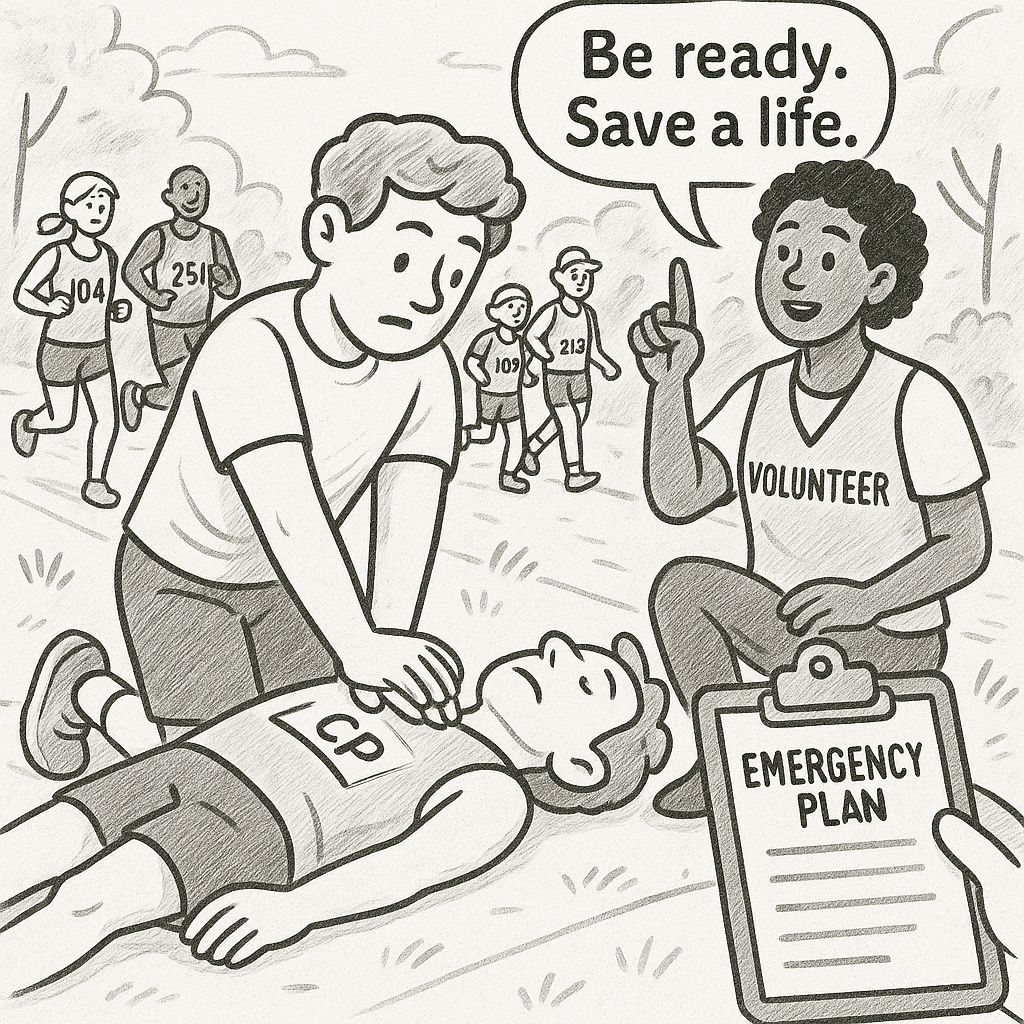
01 May Homework—For Me AND You
Ed Kornoelje DO
Sports Medicine|University of Michigan Health-West
So Laura gave us (all of us) some homework. For me, a very good suggestion for an article. For you—read on!
Over the last few months there have been several instances where someone has gone down on a racecourse and needed emergent care. Several of the incidents had favorable outcomes (last fall at the UMHWest GR Marathon and LMCU Bridge Run, and very recently at the Dirty 30), and some did not.
Why? Multiple factors of course—even with the best preparation good outcomes are not guaranteed—let’s look at a few.
1. Time is life. Every minute CPR is delayed the chances of survival drop by about 10%. In all the positive outcomes noted above, CPR was started very quickly by non-medical personnel. Runners and spectators with a knowledge of CPR jumped in right away followed closely by first responders and others with medical experience.
2. There is a plan. It is often said that the “best” place to have an emergency is on a racecourse. (It is, of course, best to never have an emergency medical issue,
but that’s beyond our control). Every race/community event has an Emergency Action Plan (EAP) that involves medical personal, first responders, event staff
and others who are all connected and respond when an emergency occurs. When an athlete (or spectator) goes down communication goes out immediately to all these people who then work together to get to the athlete ASAP (see #1 above).
3. If you are the first person responding to an emergency situation, make sure you (or someone with you if you start CPR—see below) notify a race official/volunteer (who will connect with the medical personnel) OR call 911. If there is any question that the message will NOT get to the medical team call 911. In most situations the dispatcher will know/be able to connect with the medical team on the course to make sure they are aware and able to respond or send someone out. It is better to have too many medical people show up as opposed to not enough.
4. Know CPR—homework for you! As noted above the best chance for a good outcome starts with a prompt response. While medical personnel are spread
across the entire course, the odds of an emergency happening right in front of an aid station is low (although we look at trends to help determine where to place
medical stations). The odds of it happening in front of a racer or spectator—close to 100%. What would you do if someone went down in front of you? That’s where training comes into play.
As I noted at the outset of the article Laura had suggested a discussion around the topic of CPR and a downed athlete. The good news—I was thinking the same thing.
After the events of last fall (in GR and around the country) plans are in place to train more of us in CPR. While we continue to iron out the details, there are several resources you can use if you want to get started. For certification, Life EMS has classes you can take—one is mainly on-line with testing in person after. Or there is a 3.5-hour class you can take in person. There is also very good evidence that watching short videos on CPR may be all that it takes to get someone up to speed—visit the American Heart Association website for access to videos as well as handouts that can be used in training. Certification is great (and I highly recommend the courses noted above) but at the end of the day the person you are aiding will not care if you are certified or not. If you know what to do—jump in.
You will be hearing/reading more on this subject over the summer and fall—sorry, not sorry. This is important, life-saving stuff that we cannot review too much. Keep
moving—and keep an eye out for someone who may need help. And feel free to reach out with thoughts or stories—homework is easier if we work together!